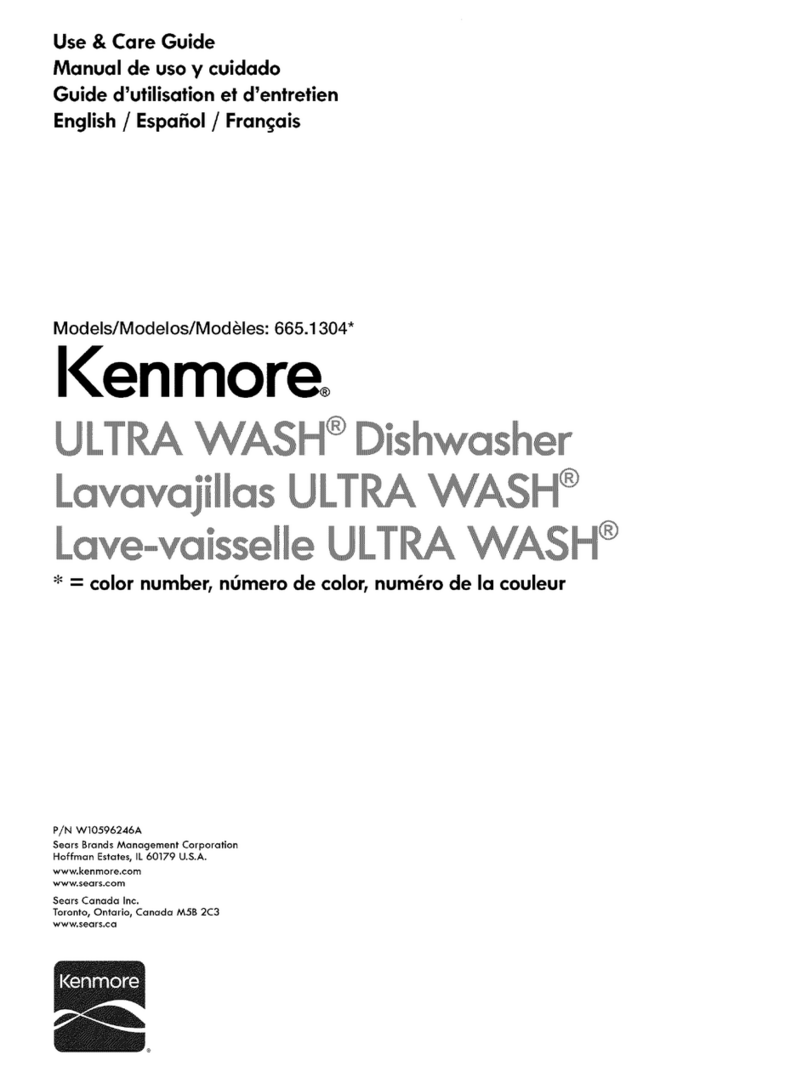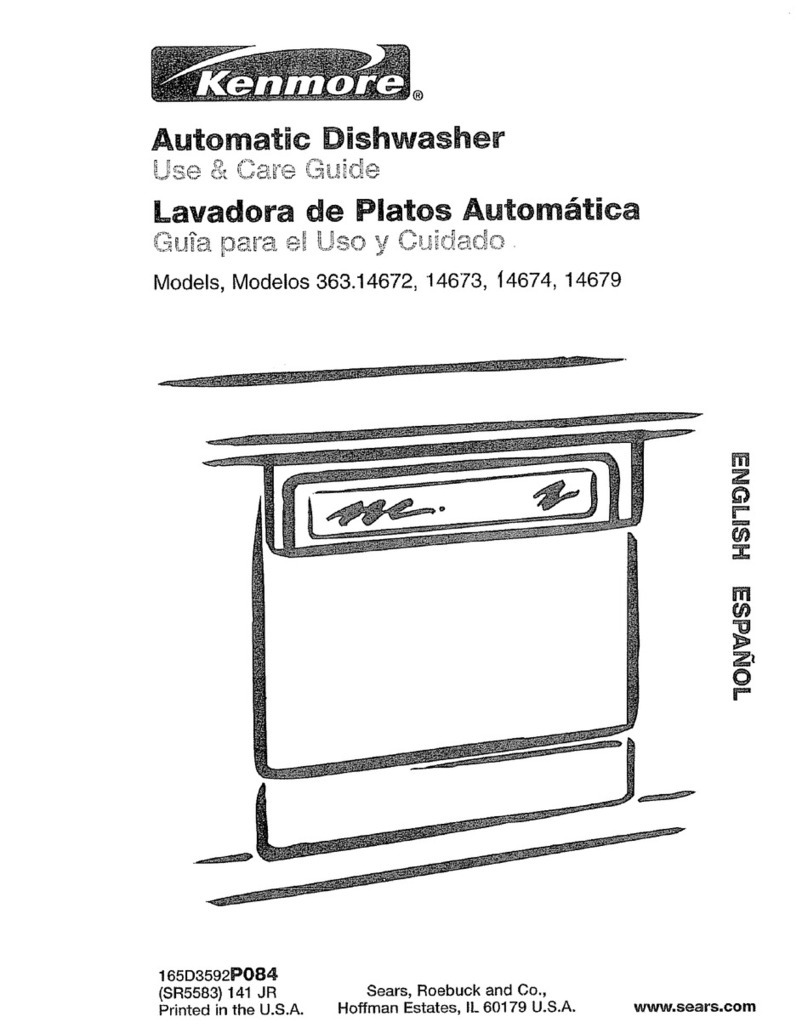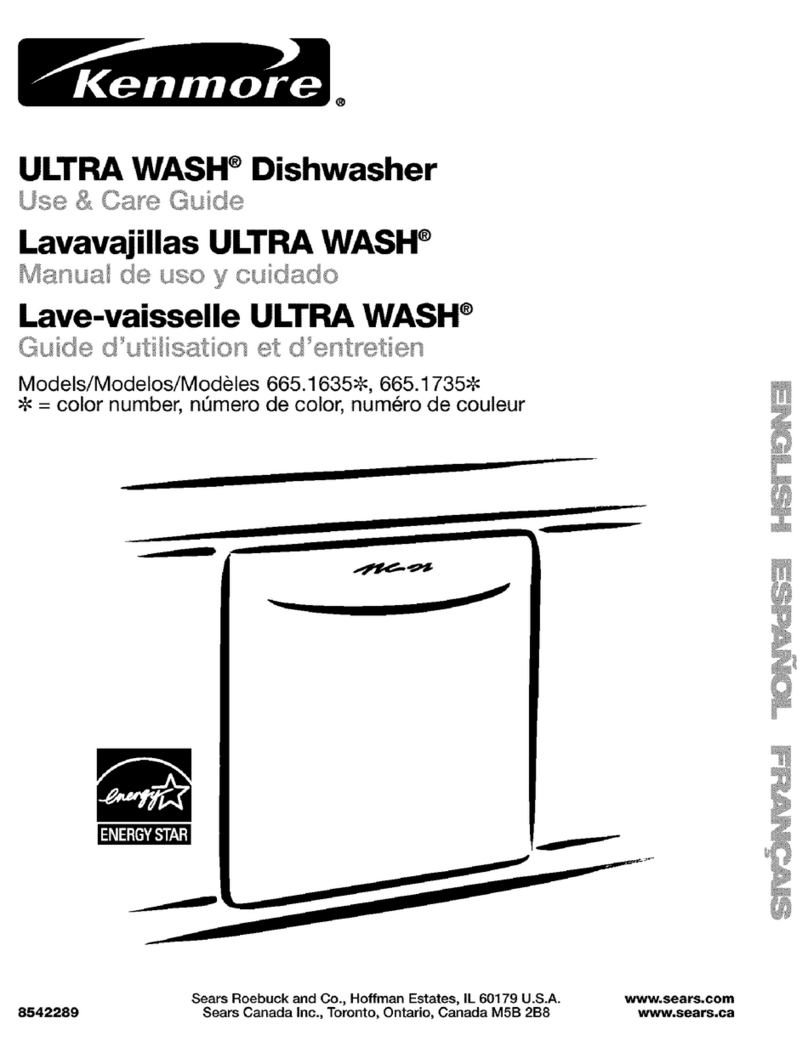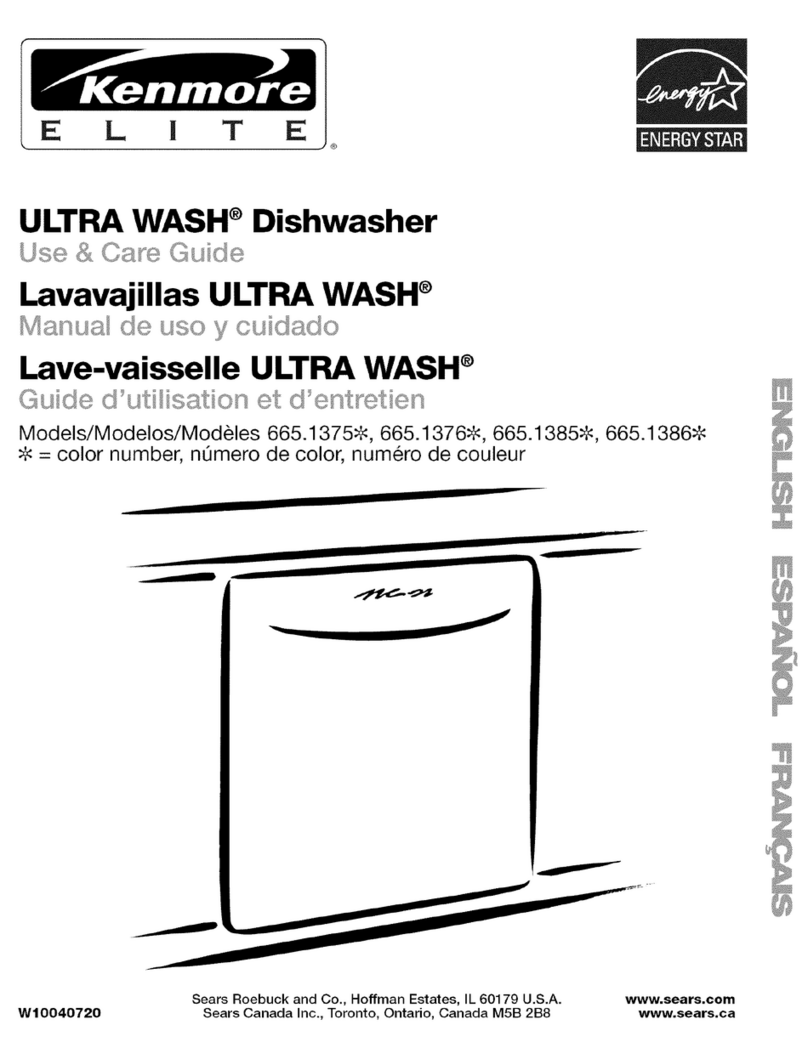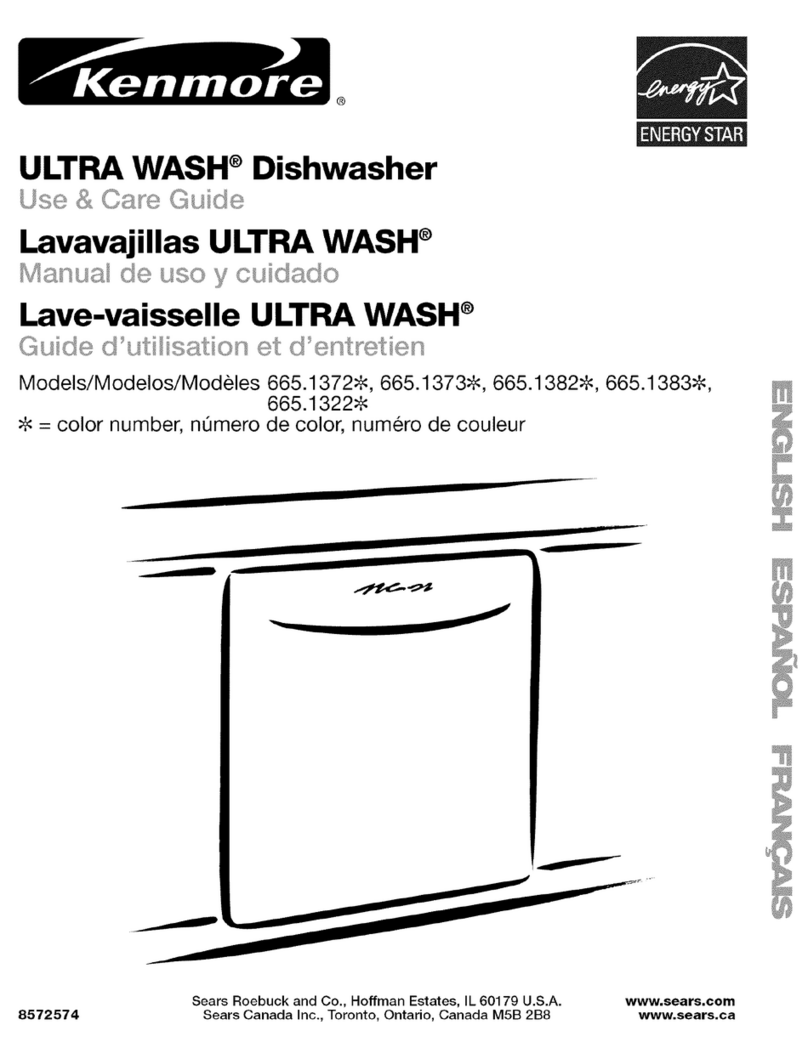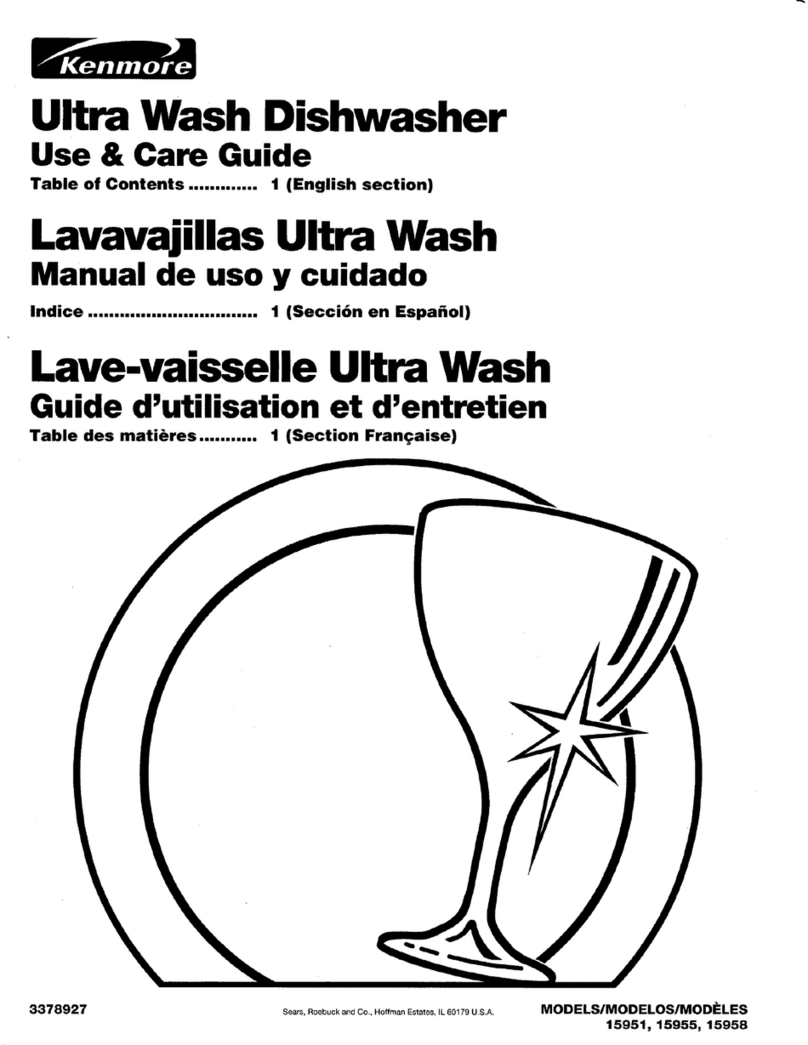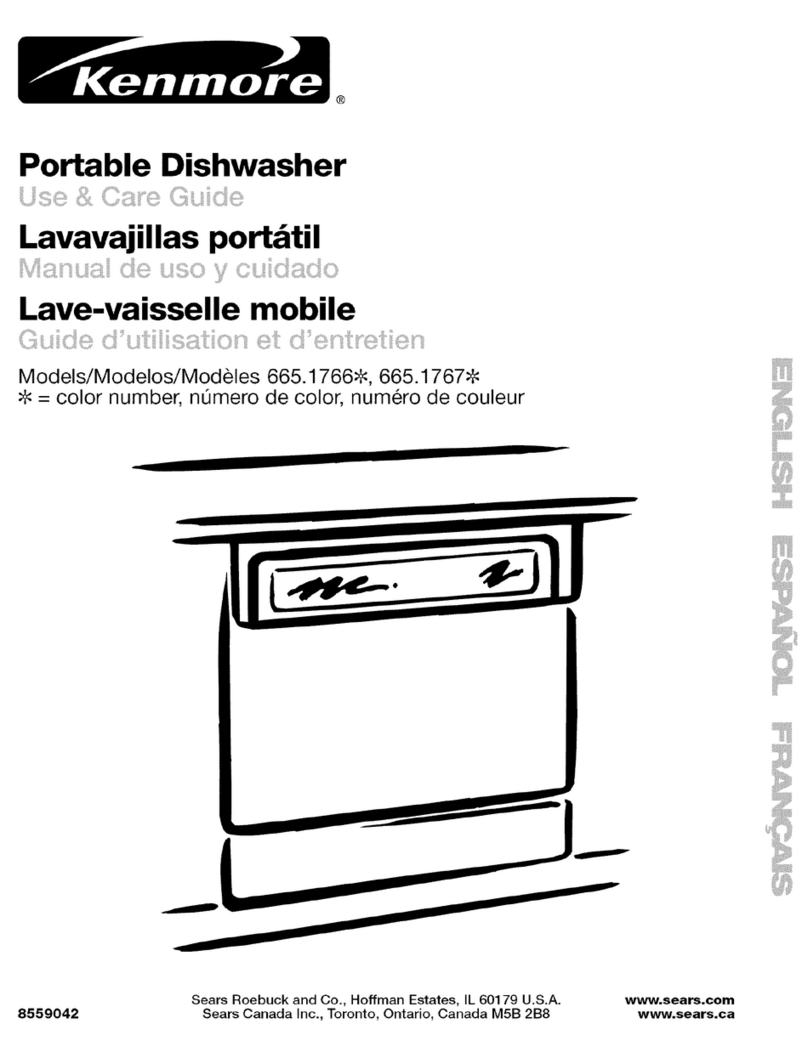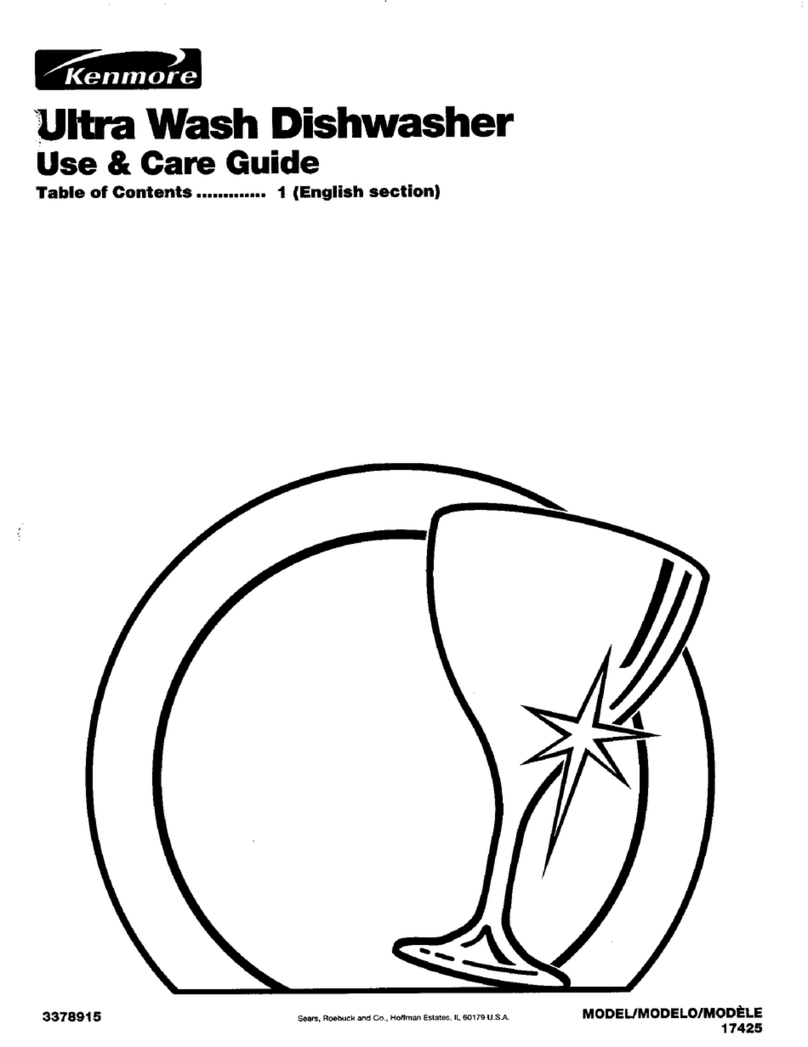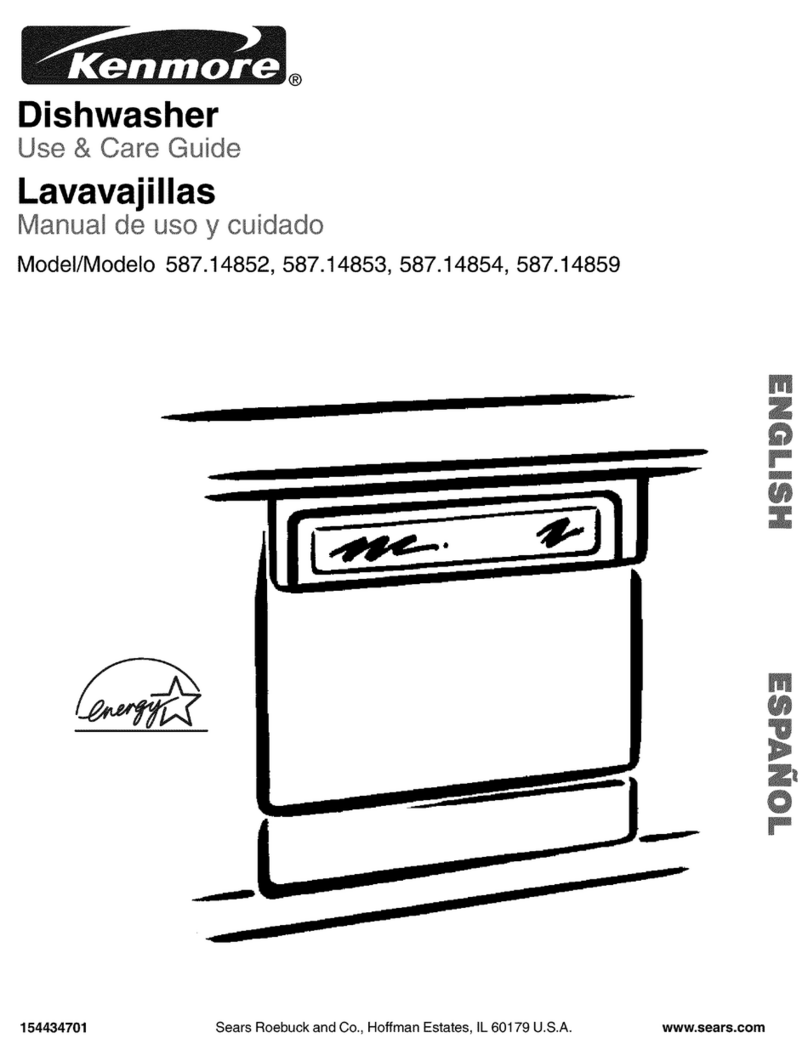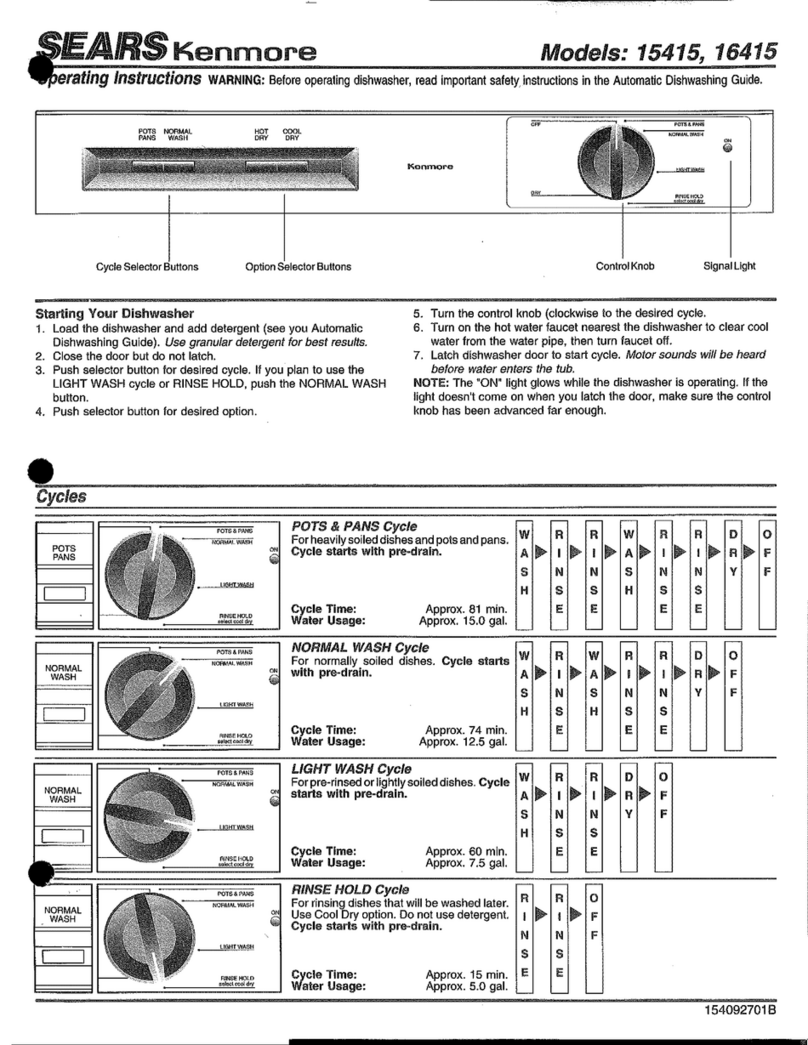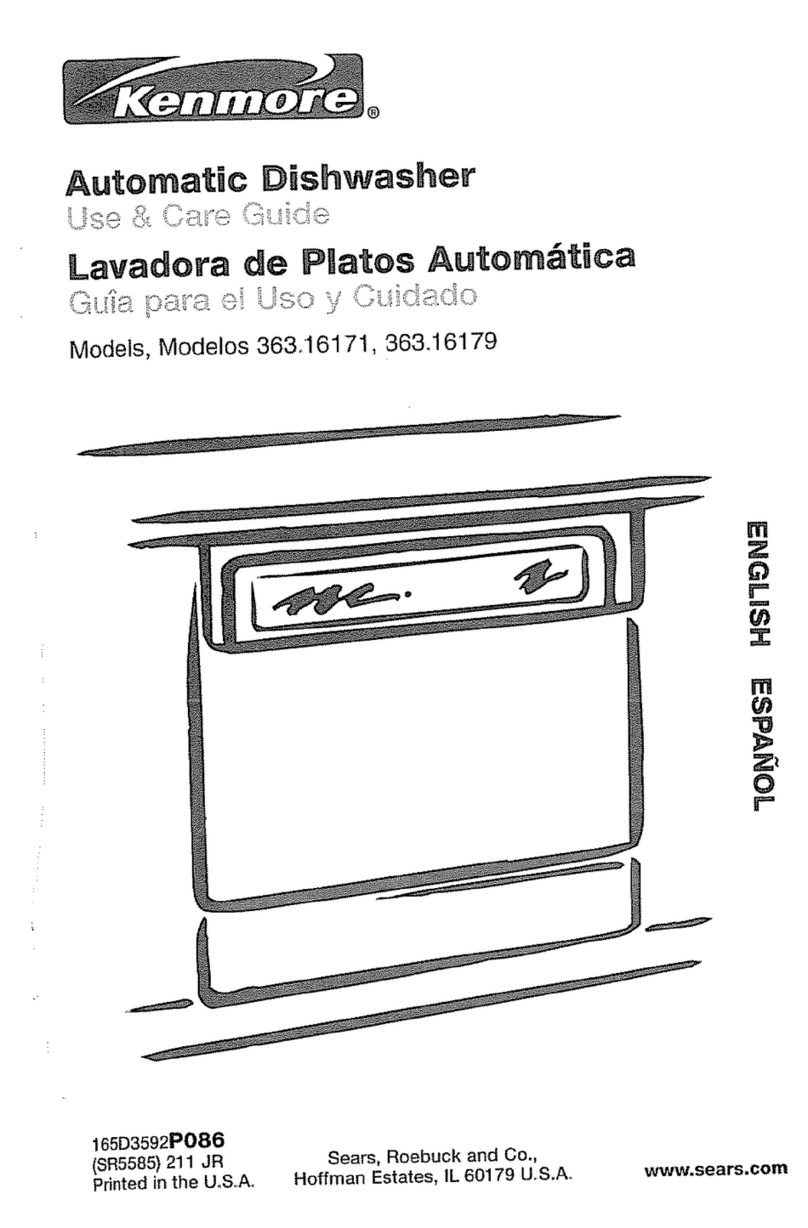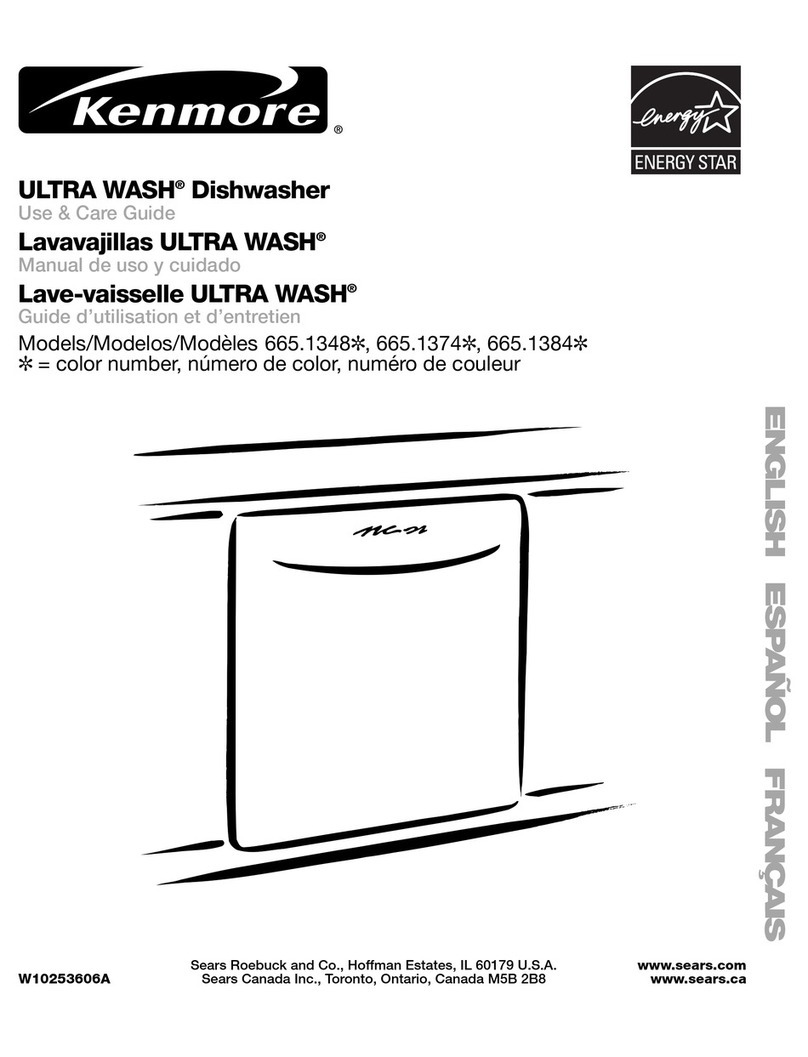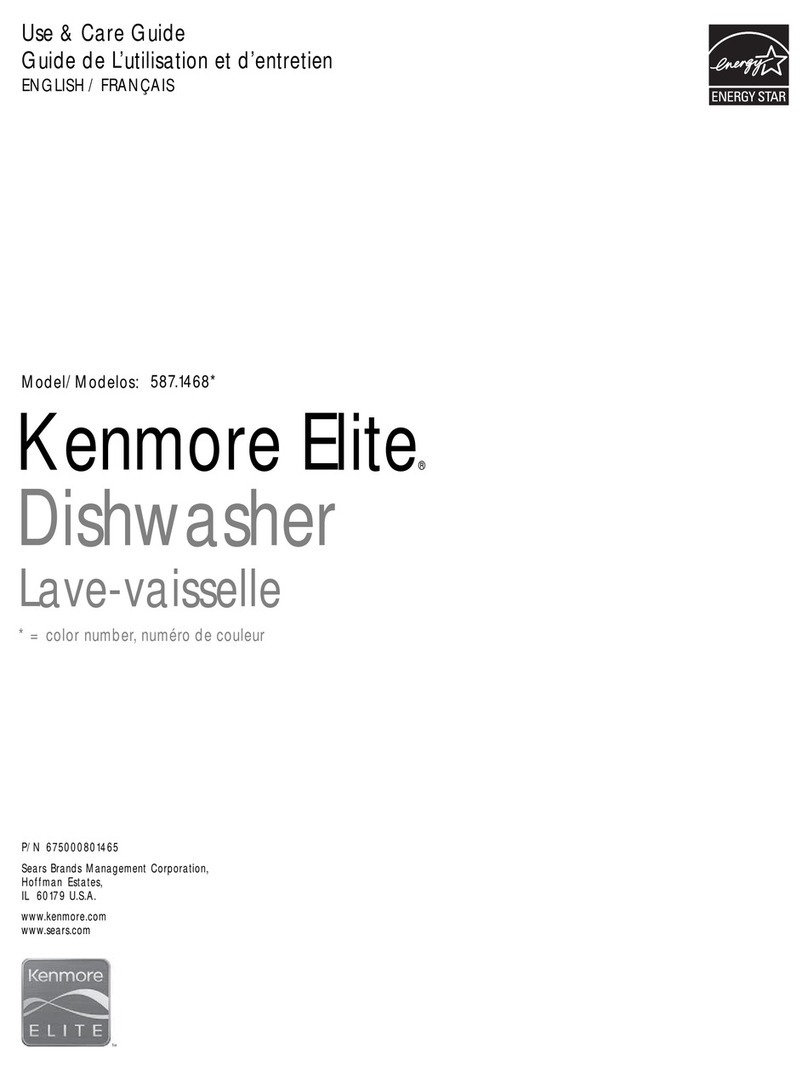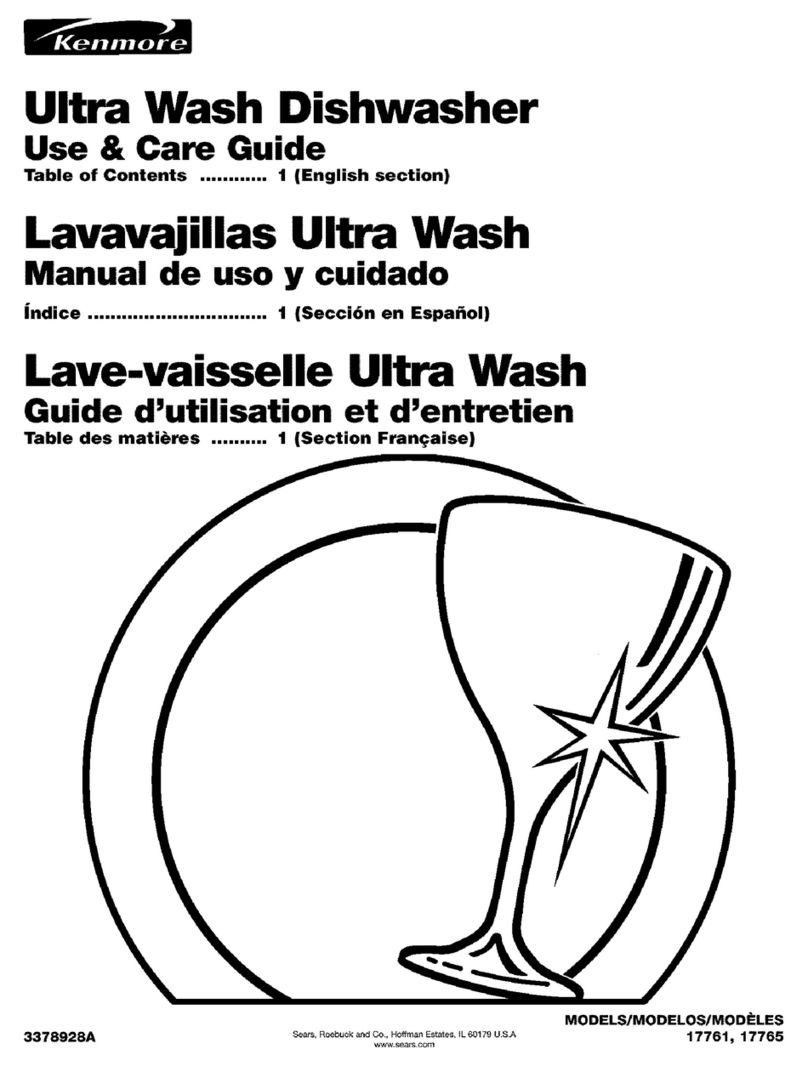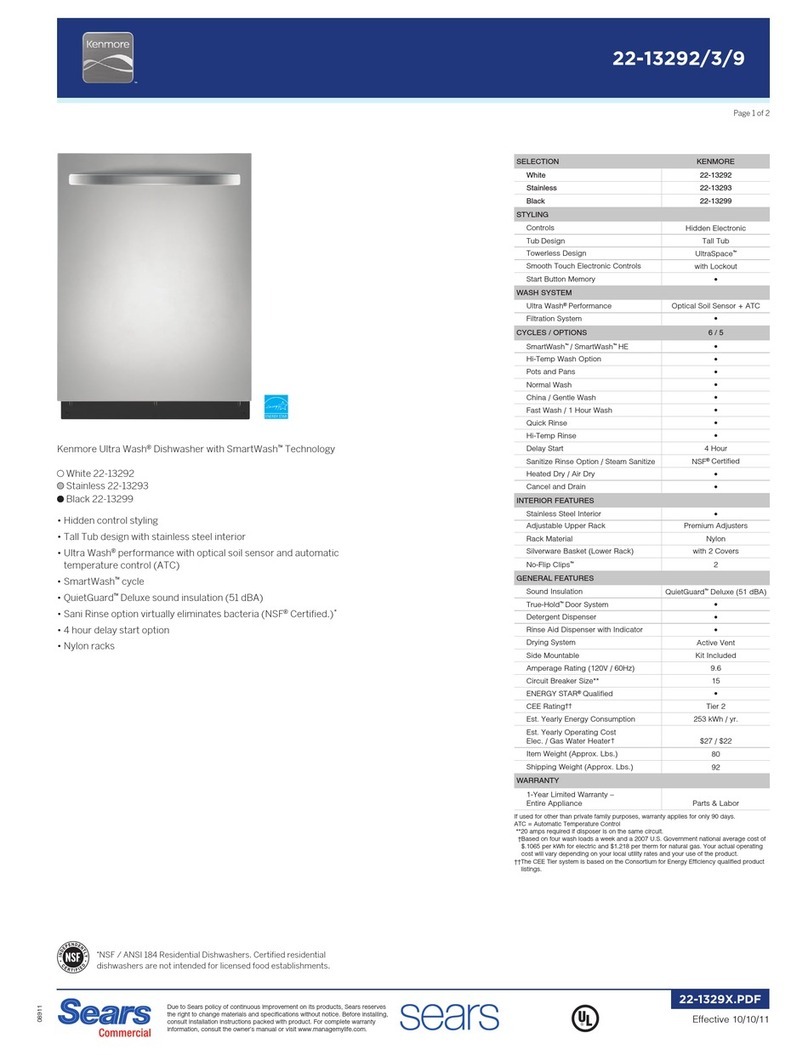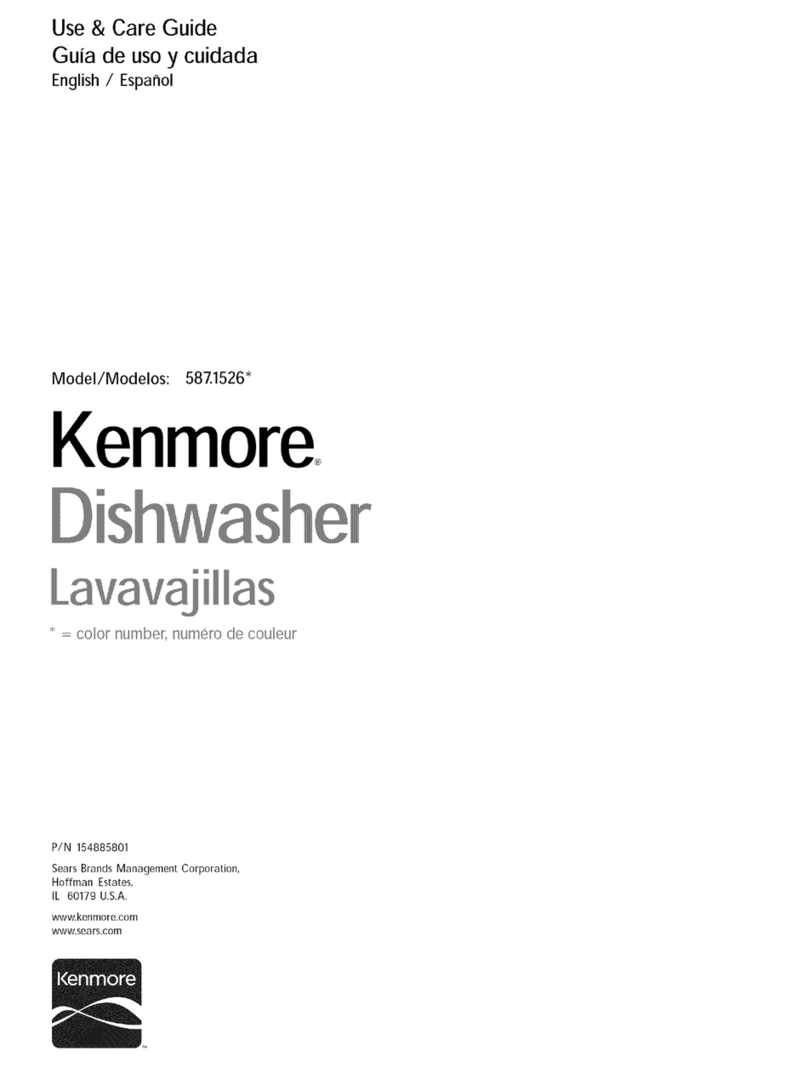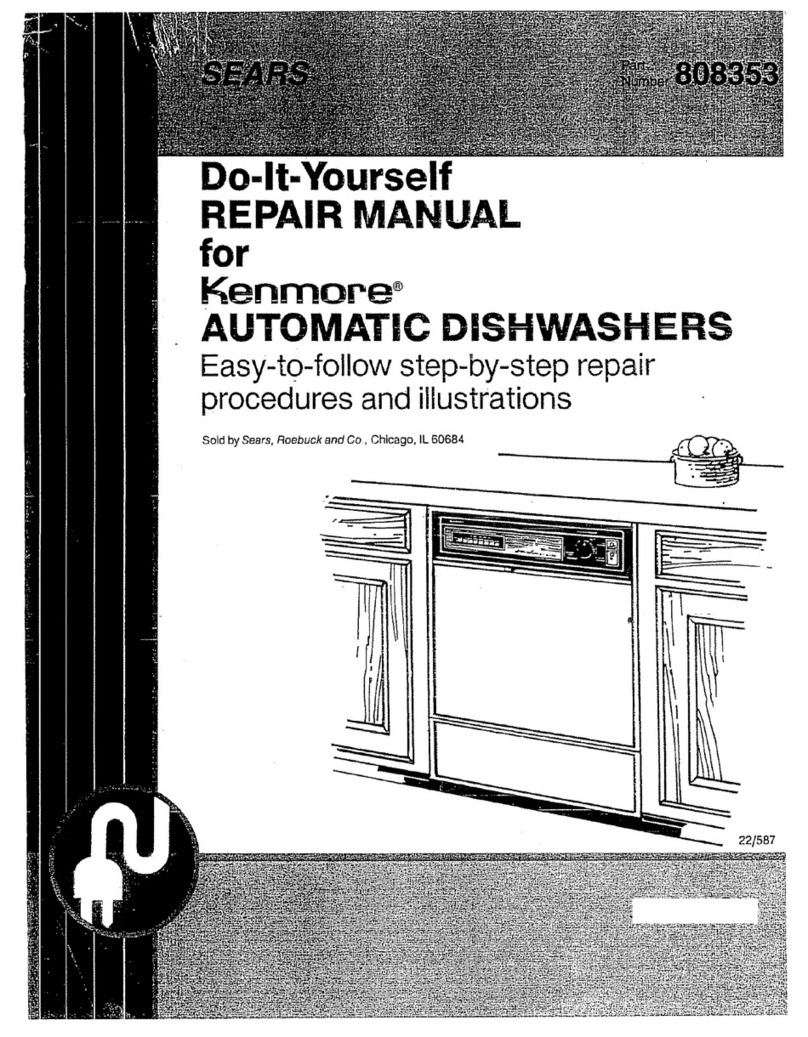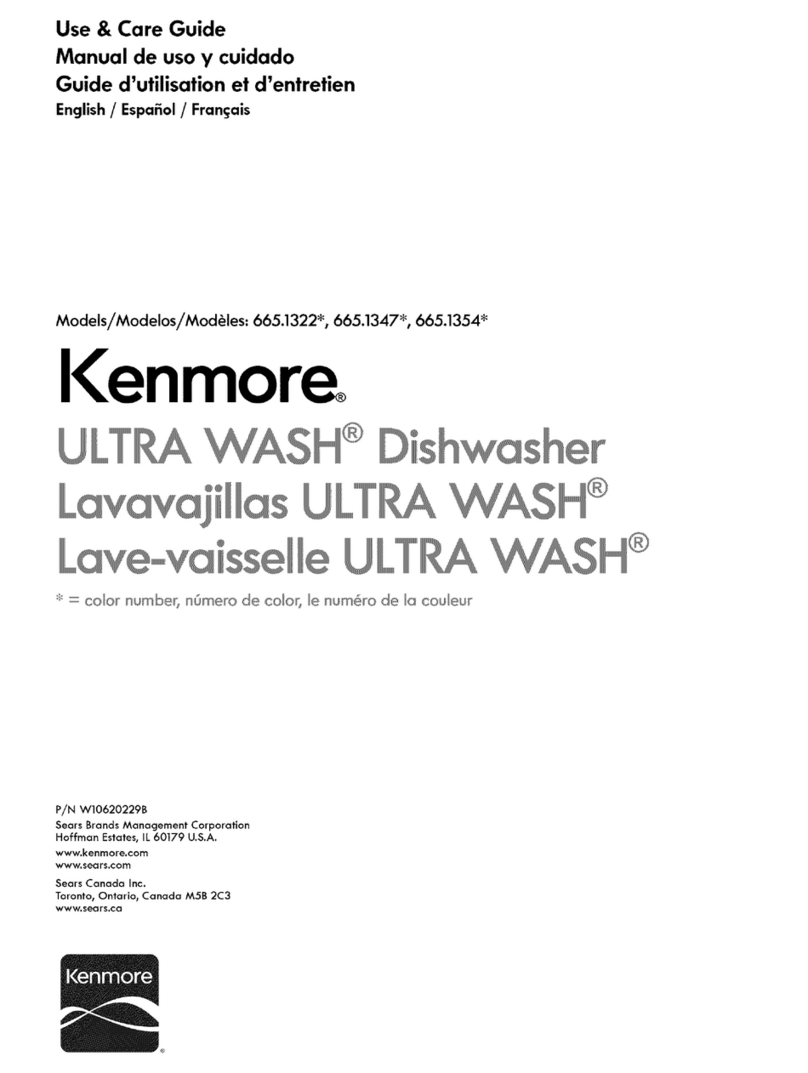
4
ImporImpor
ImporImpor
Important Safety Instrtant Safety Instr
tant Safety Instrtant Safety Instr
tant Safety Instructionsuctions
uctionsuctions
uctions
• Read all instructions before using your
dishwasher.
• Use your dishwasher only as instructed in this
Use and Care Guide.
• Instructions appearing in this Use and Care
Guide are not meant to cover every possible
condition and situation that may occur. Practice
common sense and caution when installing,
operating and maintaining any appliance.
• DISHWASHER MUST BE ELECTRICALLY
GROUNDED. Read the Installation Instructions
for details.
• This dishwasher is designed to operate on
regular house current (120 V, 60 Hz). Use a
circuit equipped with a 15 ampere fuse or circuit
breaker. Use a 20 ampere fuse if dishwasher is
connected with a food waste disposer.
• Do not operate dishwasher unless all enclosure
panels are in their proper place.
• To avoid entrapment and/or suffocation, remove
door or door latch mechanism from any
dishwasher that is discarded or not in use.
• Keep young children and infants away from
dishwasher when it is operating.
• Do not let children abuse, sit, stand or play on
door or racks of a dishwasher.
• Use only detergents and rinse agents
recommended for use in a dishwasher.
Printed in U.S.A.
• Store dishwasher detergent and rinse agents
out of the reach of children.
• Do not wash plastic items unless marked
“dishwasher safe” or the equivalent. Check with
manufacturer for recommendations, if not
marked. Items that are not dishwasher safe
may melt and create a potential fire hazard.
• If the dishwasher drains into a food disposer,
make sure disposer is completely empty before
running dishwasher.
• Disconnect electrical power to dishwasher
before servicing.
• Repairs should be done by a qualified
technician.
• Do not tamper with controls.
• Do not touch the heating element during or
immediately after use.
• When loading items to be washed:
- Locate sharp items and knives so that they
are not likely to damage the door seal or
tub.
- Load sharp items and knives with the
handles up to reduce the risk of cut-type
injuries.
• Under certain conditions, hydrogen gas may be
produced in a hot water system that has not
been used for 2 weeks or more. HYDROGEN
GAS IS EXPLOSIVE. If hot water system has
not been used for such a period, before using
dishwasher, turn on all hot water faucets and let
water flow from each for several minutes. This
will release any accumulated hydrogen gas.
HYDROGEN GAS IS FLAMMABLE. Do not
smoke or use an open flame during this time.
• Do not store or use combustible materials,
gasoline or other flammable vapors and liquids
in the vicinity of this or any other appliance.
To reduce the risk of fire, electrical shock,
or injury when using your dishwasher,
follow basic precautions including the
following:
This symbol will help alert you to such
dangers as personal injury, burns, fire, and
electrical shock.
SASA
SASA
SAVE THESEVE THESE
VE THESEVE THESE
VE THESE
INSTRUCTIONSINSTRUCTIONS
INSTRUCTIONSINSTRUCTIONS
INSTRUCTIONS
ENGLISHENGLISH
ENGLISHENGLISH
ENGLISH
